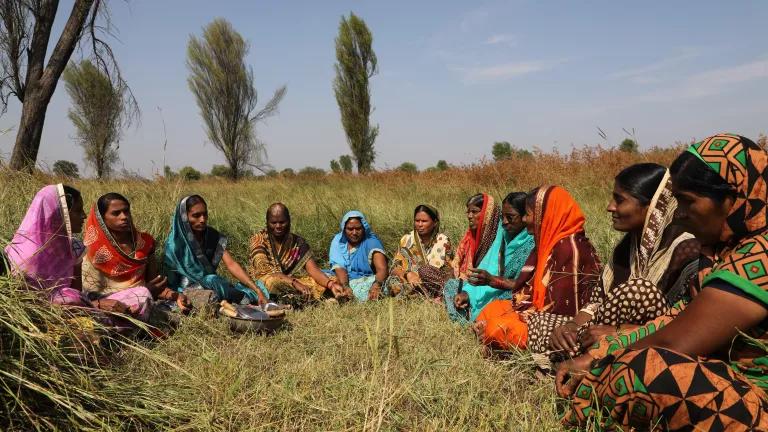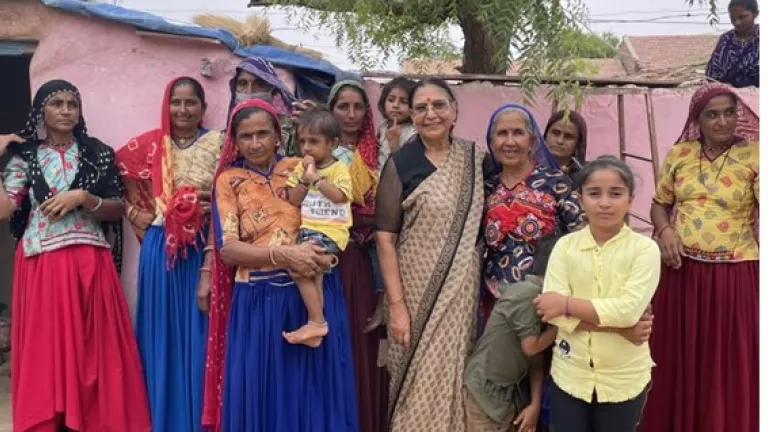Availability, Affordability, and Assurance for Energy Access
Large scale deployment of clean energy solutions is critical to providing energy security to vulnerable communities and households in India.

Hingoli, Maharashtra, India
Guest Blog by Akanksha Golchha
Following India’s bold renewable energy targets announced at the Glasgow climate conference, the Ministry of New and Renewable Energy has released a policy framework for developing and advancing Decentralized Renewable Energy Livelihood Applications. Decentralized renewable energy is often produced closer to the point of consumption and built as small-scale projects benefitting rural communities that do not have reliable access to the electricity grid. Growth in decentralized renewables will lead to a robust diversified green electricity grid and is key to meeting India’s non-fossil fuel electricity generation target of 500GW by 2030.
Although India has made good progress on household electrification under the flagship ‘SAUBHAGYA’ scheme, decentralized renewables can supplement the emerging demand of newly electrified households and increase reliability of power supply. Additionally, decentralized renewables have immense potential for creating jobs, empowering entrepreneurship, and enhancing livelihood opportunities for the rural communities. With increased electrification levels, the narratives on energy access need to evolve with a focus on tangible solutions for unserved and underserved communities.
Decentralized renewable energy solutions are a key component of the SEWA and NRDC Hariyali: Green Villages initiative in Gujarat and Rajasthan. This is a women-led initiative with an emphasis on policy implementation and scalable business solutions for clean energy at the village level. The Green Village Plans cover a host of clean and efficient energy technologies with an objective to elevate living conditions, reduce expenses on fossil fuel based energy solutions and increase livelihood opportunities in rural India.

Snapshots of biogas plant installation and awareness generation activity in Aravalli District, Gujarat
SEWA, 2022
With SEWA's strong community connections and grassroots workers, we have initiated Green Village Energy Plans in more than 10 villages Gujarat and Rajasthan. These pilots underscore the importance of three critical tenets of energy access: availability, affordability, and assurance.
- Availability: The availability aspect involves two major resources: (a) electricity, and (b) clean technology. While India has come a long way in ensuring last mile connectivity, gaps on the technological and financial fronts persist. NRDC and SEWA regularly engage with policy makers and technology suppliers to identify clean energy solutions that would derive maximum benefits to households. To ensure sustainability of interventions, NRDC and SEWA perform capacity building initiatives to provide hand holding support to the households.
- Affordability: The two critical facets to affordability are ability and willingness to pay. Considering that both the parameters are consumer-centric, it is important to highlight relevant incentives for the households to adopt clean energy solutions. For instance, it is critical to demonstrate that the high upfront cost of energy efficient appliance will be offset through savings in electricity bills. When affordable prices are available, adoption follows; more than 300 households adopted energy efficient equipment offered at a low cost by Energy Efficiency Services Limited (EESL) and supplemented through flexible financing options and capacity building initiatives undertaken by NRDC and SEWA.
- Assurance: While the rate of adoption of decentralized renewable energy solutions have picked up in rural areas, the lack of quality assurance and after sale service have been some of the biggest bottlenecks deterring the technology scale up. The Green Village Plans on the ground experience reflects the critical need to develop end-to-end value chains to ensure timely repairs and maintenance of assets. Quality assurance of clean energy technologies offer imminent prospects to enhance livelihood opportunities at the village level. Rural youth can be equipped with skills to undertake repairs and maintenance of clean energy assets through suitable training and capacity building.
Large scale deployment of clean energy solutions is critical to providing energy security to vulnerable communities and households. Deployment of these solutions can help build resilience while ensuring that the financial burden of energy use is reduced. Addressing both supply-side and demand-side challenges are key. The supply-side concerns require streamlined technology and policy pushes while the demand-side concerns can be addressed through targeted interventions such as capacity building and enabling access to finance. NRDC and SEWA are working with communities to enhance availability of clean and quality assured technologies at affordable prices. With increased decentralized renewable energy implementation, India has the opportunity to reach its non-fossil fuel electricity generation target, boost livelihoods and ensure increased equitable energy access for all.
Akanksha Golchha is Clean Energy Access Lead (Consultant) with NRDC




